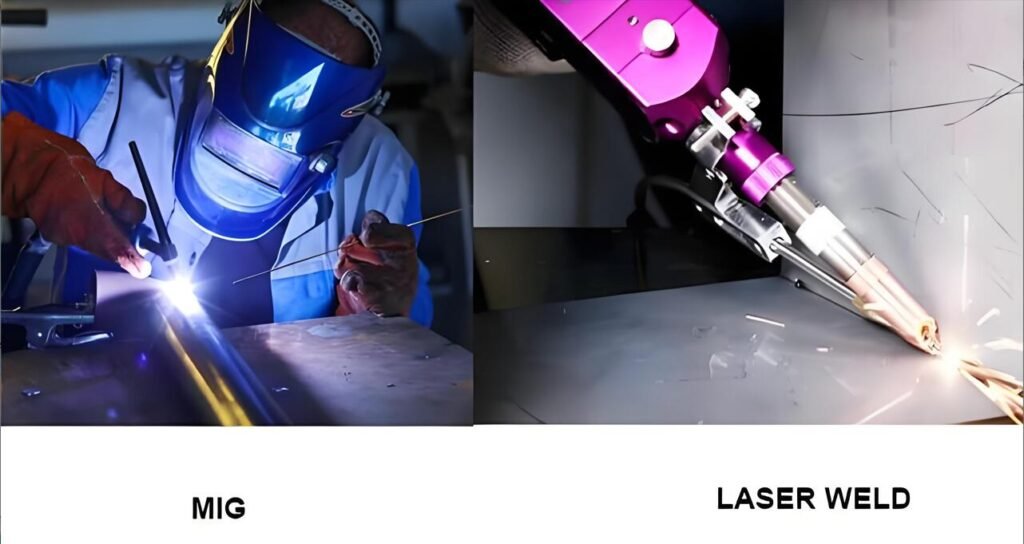As a new popular welding technology, laser welding is undoubtedly strong, which can be seen from the various laser welding machines that are currently hot-selling. So how does it compare with MIG welding technology?

As we know, laser welding and MIG (Metal Inert Gas) welding are both popular welding techniques, each with its own strengths and weaknesses. The comparison of their strength depends on various factors, including the materials being welded, the thickness of those materials, and the specific application.
Strength Comparison
Laser Welding: Generally, laser welding can be stronger than MIG welding for certain applications. It utilizes a highly focused laser beam that melts and fuses materials with minimal heat loss to the surrounding area, resulting in a narrower heat-affected zone (HAZ) and reduced internal stresses. This precision often leads to high-quality welds that maintain the integrity of the parent metal12. Studies have shown that laser welds can achieve strength comparable to or exceeding that of the base materials, particularly in thin sections like stainless steel and titanium.
MIG Welding: MIG welding is known for its versatility and ability to weld thicker materials effectively. It produces a larger HAZ due to higher heat input, which can lead to potential issues such as distortion or reduced strength in some cases. However, MIG welding is often considered a “jack of all trades,” providing strong welds suitable for a wide range of applications. It excels in structural applications where thicker joints are necessary.
Main Differences
| Feature | Laser Welding | MIG Welding |
| Heat Input | Lower heat input, less distortion | Higher heat input, larger HAZ |
| Weld Quality | High precision, minimal defects | Good penetration but prone to defects |
| Material Thickness | Best for thin materials | Suitable for thicker materials |
| Speed | Faster welding speeds | Relatively fast but slower than laser |
| Application Suitability | Ideal for delicate and intricate welds | Versatile for various applications |
Conclusion
In summary, while laser welding can be stronger than MIG welding in specific contexts—especially for thin materials—it is essential to consider the application requirements. For thicker materials or structural applications, MIG welding may be more appropriate due to its ability to produce robust welds. Ultimately, the choice between laser and MIG welding should be based on the specific needs of the project, including material type, thickness, and required weld quality. If you are still confused in choosing a suitable machine, please contact us – the best laser welding machine manufacturer in china, who has a professional technical team as a support, and a sales team with all patience to help you for the best solutions.
